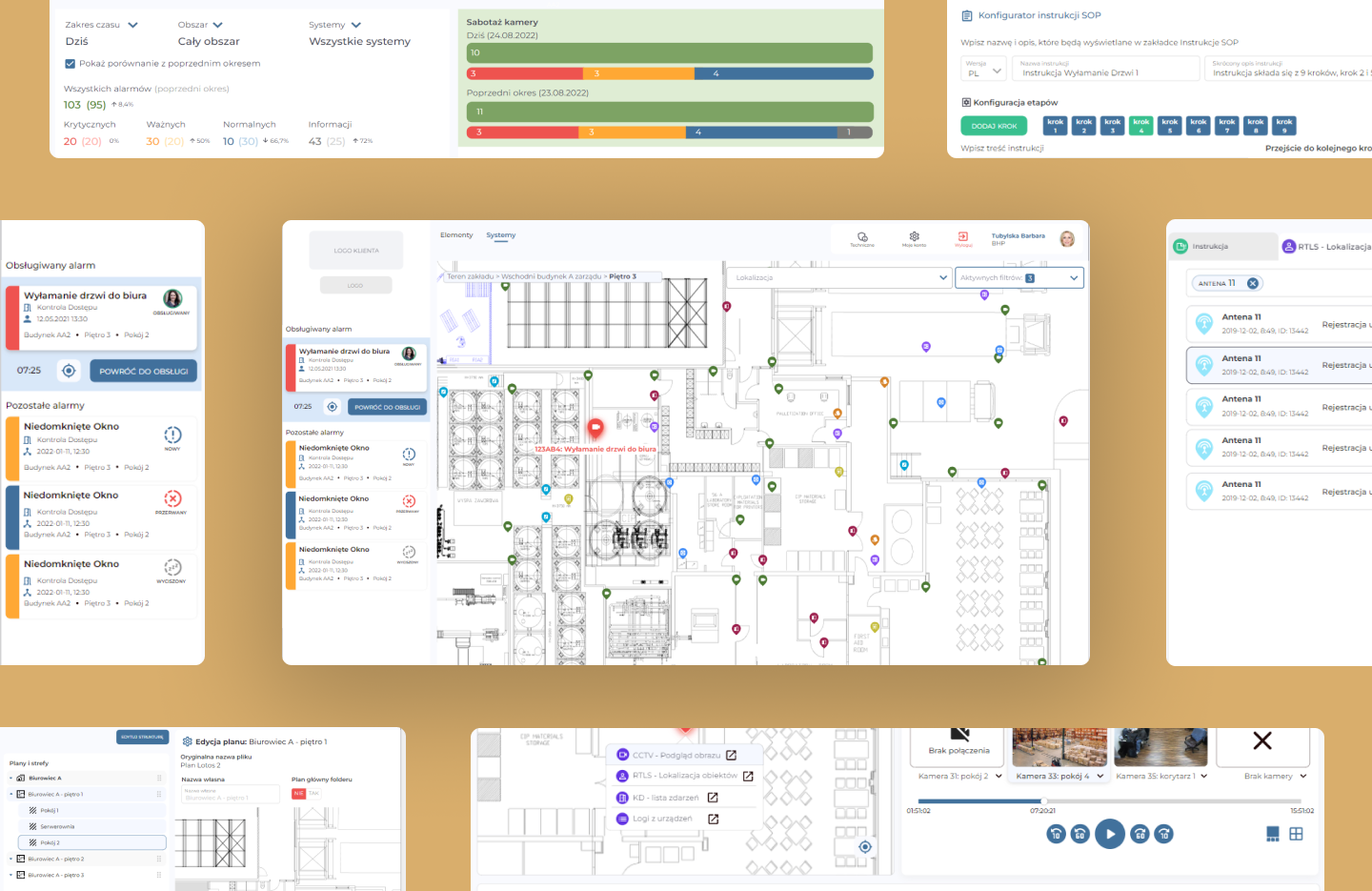Secorun PSIM (Physical Security Information Management) is a visual integration platform for many control and security management systems such as: access control, fire alerts, CCTV, building automation systems etc. Interactive map of the facility allows instant identification and localization of an event together with quick preview of information straight from the source (e.g. broadcast from the nearest camera). Functionalities like Mission Control / SOP (Standard Operating Procedures) help to automate incident management and allow the security & operation specialists to react effectively. The system is complemented by information analyzed by AI developed to predict dangerous events.
“The sources of information about the devices and events are other systems that share this data through their APIs. PSIM broadens the perception of the monitored object functioning by simultaneously correlating the information from many different systems.”
Łukasz Goncerzewicz
Senior Software Engineer
Business benefits of PSIM
Shortening of the reaction time to occurring dangers thanks to the ability of continuous monitoring of the whole company infrastructure in one window. Instead of using many interfaces independently, we have one unified view.
Minimization of the losses resulting from the goods’ damage caused by the danger. The platform allows determining the resulting inconveniences in the system’s infrastructure functioning and also predicting potential interruptions in advance.
Optimization of human resources usage. Ability of complex alert management including managing the people handling the alarm allowing shortening the reaction time and improving the whole process handling.
Collecting data from various sources (systems and sensors) in order to comprehensively analyze the alert’s detection subject. Easy and quick access to the information about the current infrastructure state.
Making the procedures regarding handling unwanted and dangerous events consistent and regulated by sharing an instruction of conduct together with a description of recommended actions.
USE CASE 1
The access control system reported an alarm to the operator about a sabotage of the reader’s case at the entrance of the server room. The access control operator checks the time and date of the alarm occurrence and asks the monitoring center to check the video material from that time. The monitoring operator finds out the location of the reader by phone and looks for cameras closest to the place of the event. The situation analysis required the analysis of events from various systems in order to determine the perpetrator and the cause of the event.
If the PSIM was implemented at the company, allowing receiving alarms from all the integrated systems in one user interface with a map showing their location, would the monitoring operator waste her_his time to analyze the situation? Would he_she have the ability to verify the alarm based on information registered by one of the other integrated systems, eg. watching videos from the cameras aimed at the place of the event?
USE CASE 2
The fire protection system reported an alarm with a description of a malfunction in one of its detectors. The operator receiving the alarm contacts the fire protection system administrator in order to get information how an alarm like that should be handled. The administrator forwarded him_her to the system’s service team to establish the malfunction details.
If the operator was able to read an instruction of conduct for every type of alarm from one application, would he_she have to establish the details of further processing with other entities every time?
Key functionalities
Visualization of the infrastructure elements of all the integrated security systems. Every operator sees the exact location of an installed element on the map, giving a precise picture of the monitored infrastructure.
Receiving alerts from certain integrated systems’ elements in one place. The operator has a cross-sectional image of the whole situation – in one window he_she sees a fire alarm, break-in alarm or reader sabotage alarm.
Presentation of data from the integrated systems e.g. the picture from cameras or access control events. In case of an alarm, as a part of access control event handling the system can present a preview from the cameras aimed at the door.
Alarm management – status, priority and people handling the alarm management. Determining the state of realization of every alarm. People self-assign themselves to the alarms preventing the alarm from being analyzed by two employees.
Managing the maps by creating relations between maps and areas. The possibility to create complex map structures by adding folders containing maps and assigning the maps to adequate areas.
Managing instructions of conduct in case of an alarm. Building step-by-step instructions of conduct. As part of the configuration it’s possible to condition going to the next step with e.g. uploading a photo.
AI/ML algorithms allow determining resulting inconveniences in the system infrastructure functioning and predicting potential deviations in advance, additionally providing the probability of their occurrence.
“PSIM is a platform integrating all possible security systems. It introduces synergy of the functioning systems raising the security level of the monitored object.
It’s a place where the user receives a broad picture of one alarm event.”
Krzysztof Białecki
IT Product Manager


Integration with third-party systems
PSIM is a platform focused on multiple integrations with control and security management systems: access control, fire alarm system, CCTV system, building automation system… PSIM was designed in a way that allows elastic integration with systems via the delivered API. It’s adapted for the API to be expanded by dedicated plugins in order to integrate with various control and security management systems developers.
